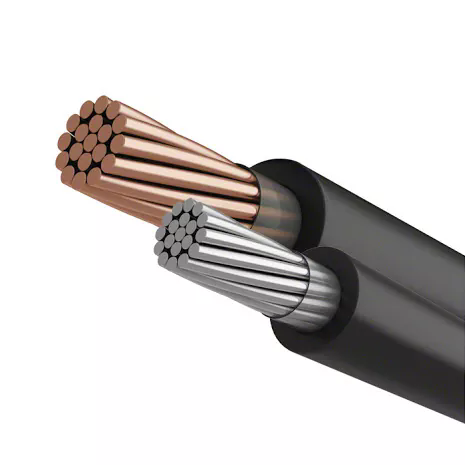Harnessing the Power of Solar Energy: The Role of Solar DC Cables
2024-08-26
As the world shifts towards more sustainable energy sources, solar power continues to gain traction as a clean and efficient way to generate electricity. Whether you're setting up a residential solar panel system or working on a large-scale commercial project, one crucial component that often goes unnoticed but plays a vital role in the efficiency and safety of your solar power system is the Solar DC Cable. In this blog, we’ll delve into what makes Solar DC Cables essential, their key features, and how to choose the right one for your solar installation.
What is a Solar DC Cable?
Solar DC cables are specially designed electrical cables used to connect solar panels to the rest of the solar power system. These cables carry direct current (DC) electricity generated by the solar panels to the inverter, which then converts the DC electricity into alternating current (AC) for use in homes and businesses. Solar DC cables are engineered to handle the specific requirements of solar power systems, including exposure to the elements and the need for high efficiency.
Key Features of Solar DC Cables
1. Weather Resistance: One of the most critical features of Solar DC cables is their ability to withstand harsh environmental conditions. Solar DC cables are typically designed with UV-resistant insulation to protect against sun exposure, as well as weather-resistant sheathing to endure rain, wind, and temperature fluctuations.
2. High Voltage and Current Rating: Solar DC cables must be capable of handling the high voltage and current generated by solar panels. These cables are designed to carry significant amounts of electricity without overheating or degrading, ensuring reliable performance and safety.
3. Durable Construction: Made from high-quality materials such as copper or aluminum, Solar DC cables are built to be durable and long-lasting. The conductor material is chosen for its excellent electrical conductivity, while the insulation and sheathing provide protection against physical damage and chemical exposure.
4. Flexible Design: Solar DC cables are designed to be flexible, allowing for easy installation and routing in various configurations. This flexibility helps simplify the installation process and ensures that the cables can be easily adapted to fit the specific layout of the solar power system.
5. Low Voltage Drop: Efficient transmission of electricity is crucial in a solar power system. Solar DC cables are designed to minimize voltage drop, which helps ensure that as much of the generated electricity as possible reaches the inverter and ultimately the electrical grid or your home’s electrical system.
6. Fire Resistance: Many Solar DC cables are manufactured with fire-resistant materials to enhance safety. This feature helps reduce the risk of fire hazards, especially in the event of short circuits or electrical faults.
Benefits of Using Solar DC Cables
1. Improved System Efficiency: High-quality Solar DC cables contribute to the overall efficiency of your solar power system. By minimizing voltage drop and ensuring reliable power transmission, these cables help maximize the amount of electricity generated and used.
2. Enhanced Safety: The durability and weather resistance of Solar DC cables enhance the safety of your solar power system. These cables are designed to handle the electrical and environmental stresses encountered in solar installations, reducing the risk of electrical faults and fire hazards.
3. Long-Term Reliability: Investing in high-quality Solar DC cables ensures long-term reliability and performance of your solar power system. Durable cables reduce the need for frequent replacements and maintenance, leading to cost savings over time.
4. Versatility: Solar DC cables are available in various sizes and types to suit different applications and installation environments. This versatility allows you to choose the right cables for your specific needs, whether you’re working on a small residential system or a large commercial installation.
5. Compliance with Standards: Many Solar DC cables meet industry standards and regulations for electrical safety and performance. Using cables that comply with these standards helps ensure that your solar power system operates safely and efficiently.
How to Choose the Right Solar DC Cable
1. Consider the Voltage and Current Rating: Select Solar DC cables with a voltage and current rating suitable for your solar power system. Ensure that the cables can handle the maximum voltage and current generated by your solar panels without overheating.
2. Check for Weather Resistance: Choose cables with UV-resistant and weather-resistant insulation and sheathing to ensure they can withstand exposure to sunlight, rain, and temperature changes.
3. Evaluate the Conductor Material: Copper and aluminum are common conductor materials for Solar DC cables. Copper offers better conductivity and is generally preferred for its efficiency, but aluminum cables can also be suitable for specific applications.
4. Assess the Cable Flexibility: Ensure that the cables are flexible enough to facilitate easy installation and routing. Flexibility is particularly important in installations with complex configurations or tight spaces.
5. Review Compliance and Certification: Verify that the cables meet relevant industry standards and certifications. This ensures that they are manufactured to high-quality standards and are suitable for use in solar power systems.
Installation Tips for Solar DC Cables
- Plan Your Cable Layout: Before installation, plan the routing of the cables to minimize unnecessary bends and ensure that the cables are protected from potential damage.
- Use Proper Connectors: Use connectors that are compatible with your Solar DC cables and rated for the same voltage and current. Ensure that all connections are secure and properly insulated.
- Protect the Cables: Install the cables in protective conduits or trays to shield them from physical damage and environmental factors. This added protection helps extend the lifespan of the cables.
- Regular Maintenance: Inspect the cables periodically for signs of wear or damage. Regular maintenance helps identify and address potential issues before they impact the performance of your solar power system.
Conclusion
Solar DC cables are a critical component in the efficiency and safety of your solar power system. With their weather resistance, durability, and ability to handle high voltages and currents, these cables ensure that your solar panels operate at their best, providing reliable and sustainable energy. By choosing the right Solar DC cables and following proper installation and maintenance practices, you can enhance the performance of your solar power system and enjoy the benefits of clean, renewable energy for years to come.



